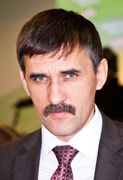|
|
|
Belonovskaya I.D., Glinskaya N.Yu., Kornipaeva A.A., Terentyev A.A.
FEATURES OF DESIGNING ASSIVE OPEN ONLINE COURSE “FUNDAMENTALS OF MECHANICAL ENGINEERING TECHNOLOGY” FOR FUTURE ENGINEERS [№ 1 ' 2025]
Massive online courses have become an integral element in the complex of pedagogical technologies for training future engineers. The problem of integrating foreign MOOC courses is the inconsistency of their content with the content of academic disciplines of the Russian School of Mechanical Engineering. The initial idea of borrowing foreign distance learning courses has transformed into a program for creating domestic platforms for exchanging original domestic developments. The author’s electronic course “Fundamentals of Mechanical Engineering Technology” in the MOOC format represents a version of educational content that is organically and consistently combined with previous and subsequent disciplines of the OSU curriculum. Thematic modules are created according to a universal scheme and are presented by a set of different formats: video, presentations and notes with test tasks, glossaries, modular and final tests. The techniques of end-to-end visualization of the educational course are used through a single visual series of production objects in lectures, practices and laboratory work; discrete visualization of technological processes through video filming and “gluing” elements of continuous technological processes of mechanical engineering, demonstration of physical prototypes of production objects. Thematic modules contain video lectures, duplicate presentations for quick viewing and a fairly wide text material with a built-in control function. The main advantages of this MOOC, as shown by the experience of integration into the educational process, include accessibility for understanding by a wide range of students, which is combined with terminological correctness, brevity and concentration of presentation of the necessary materials, visualization of the processes and objects being studied, and interactive capabilities. Common disadvantages inherent in all MOOCs include the large time costs of its creation and the impossibility of making changes based on feedback. The course is implemented independently of the teacher, so it is difficult to quickly respond to the results of its use. |
|

Editor-in-chief |
Sergey Aleksandrovich
MIROSHNIKOV |
|
|


















